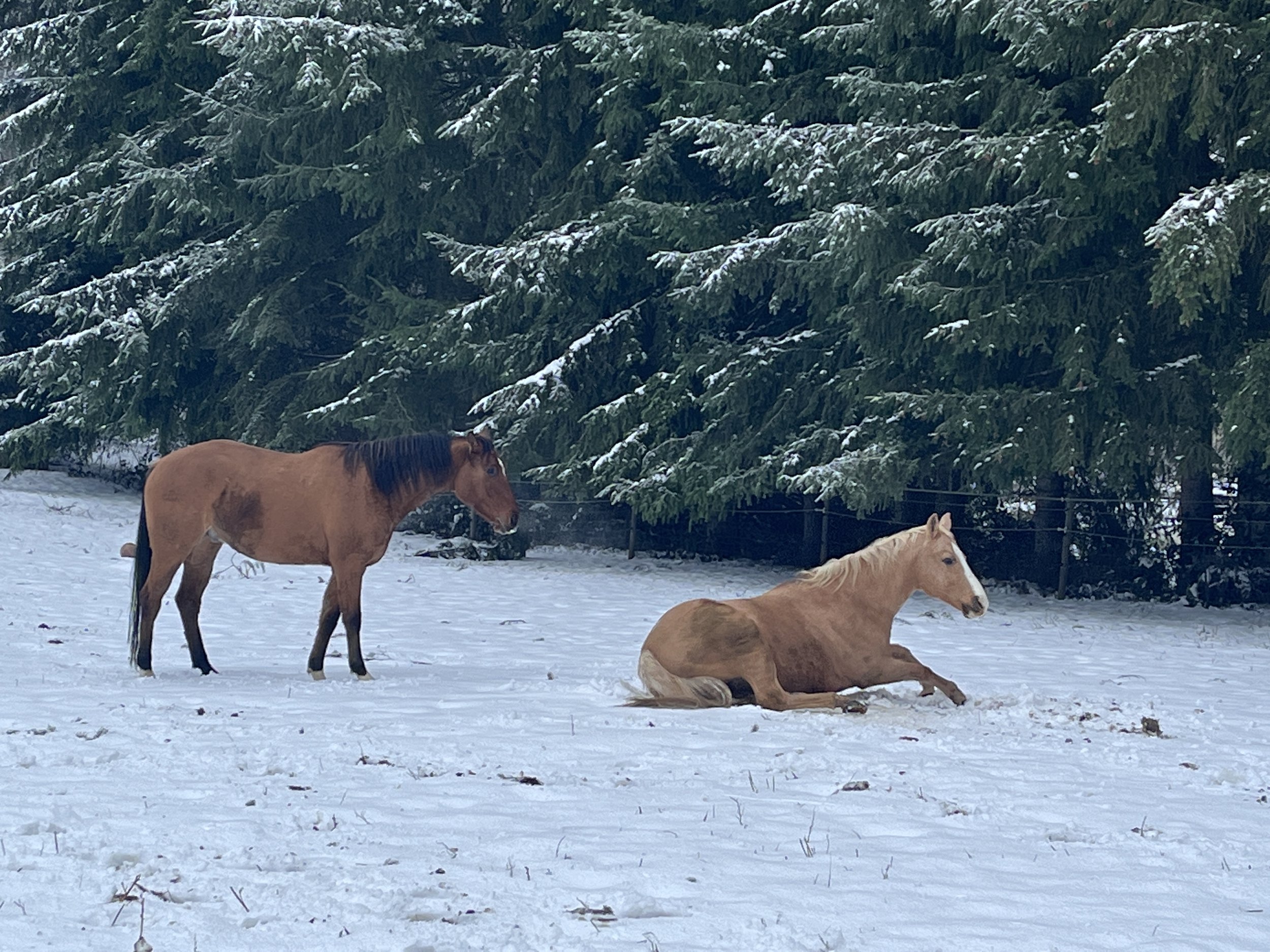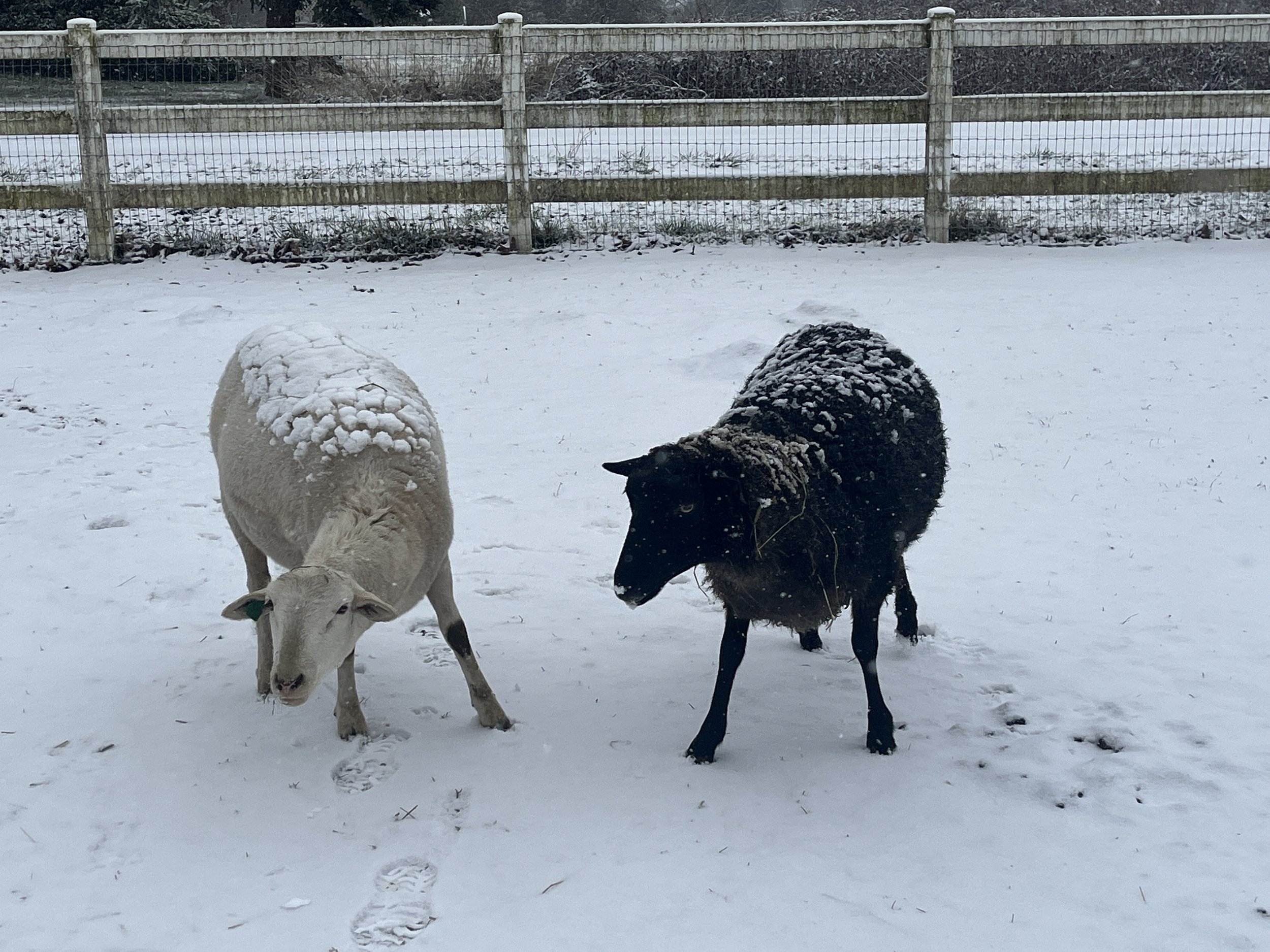Winter animal care
Our winter horses enjoy snow time and even make their own snow angels!
This is a great visual of snow sitting on top of sheep.
Winter brings a lot of questions about the well-being of animals on the farm. Questions like “why don’t you bring them all inside?” and “why don’t they have blankets/coats?” are just a few of the questions. These questions are understandable because as humans when we’re cold we assume the animals are cold. But the reality is that healthy animals have a number of natural ways to keep themselves warm without human intervention. Let’s talk about some of the ways animals keep themselves warm when the humans are bundling up.
The easiest one to observe is that they grow winter coats, which are longer than their sleek summer coats and give them a distinct fluffy appearance. The fur on these critters does a great job of fluffing up and creating an insulating layer of warm air between the animal’s skin and the weather - sort of like a wet suit keeps a diver cozy in cold waters. You can see this process working when you see snow accumulating on their backs without melting.
They snuggle up. Whether curling into a tight ball, nose to tail, to conserve heat individually or nestling up with other critters, snuggling in is another easy to observe way farm animals keep themselves warm.
Much like we can warm ourselves up with exercise, movement gets their blood flowing and warms their bodies up in the process. A few laps around the field or some friendly head butting with another critter, and they’re good to go.
Perhaps the least obvious way they keep themselves warm is through the process of digestion. We offer all of our animals free choice to feed all year. But in the winter, this becomes even more important because the simple process of digestion fuels their metabolism and helps keep them toasty from the inside out.
And having access to clean drinking water isn’t necessarily a direct contributor to animal warmth, it is key to a healthy and well-functioning body and thus a critical component of winter care.



